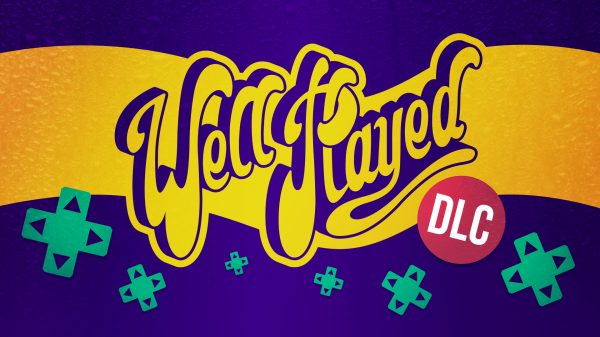FROM THE AUTHOR: Tell Me Why features transgender, queer, and indigenous characters, as well as representations of mental health issues and themes of death and suicide. The following review was written by myself, a queer cisgender person, and as such I acknowledge that any critique of its portrayal may be missing context. DONTNOD Entertainment has been vocal in their efforts to consult subject matter experts, Xbox user research audiences and community members in shaping the game and offered lines of communication for any questions I should have in reviewing Tell Me Why, as well as created a dedicated FAQ page for the public regarding these themes.
This review will also contain some spoilers for early plot points for the purpose of discussing the above themes. These spoilers will be prominently tagged and hidden by default, but to remain completely unspoiled I suggest skipping to the ‘Final Thoughts’ section for a general, spoiler-free opinion and my final review score.
As ever, WellPlayed welcomes any concerns or feedback around our review process.
While it wasn’t their first game, ever since 2015’s Life is Strange, French developer DONTNOD Entertainment has cemented itself as a studio to watch for fans of emotionally-charged narrative video games. The episodic series went from strength to strength with its second season as well, with Life is Strange 2 earning just as much acclaim (I awarded its finale a 9.5 in my review). Now, with the power of Xbox Game Studios behind them, Dontnod has stepped away from the Life is Strange universe to debut a new take on their established episodic formula with Tell Me Why, and we were lucky enough to get access to the full three-episode season.
While still a game in the vein of their previous narrative series’, Tell Me Why represents a departure for Dontnod in a few notable ways. For starters, the game features two playable main characters. It’s also being released on a far tighter schedule than previous games, with only a week gap between each of its three episodes. These factors, as well as its new gameplay twists, are important in Tell Me Why’s most interesting point of difference – this is a story within a story. As its characters’ personal journeys move forward from a life-changing experience, a series of revelations begins to take them backward from the same point.

Tell Me Why starts in earnest with a reunion between twins Tyler and Alyson, as Tyler returns from a ten-year stint in a youth correctional facility to help Alyson sell their childhood home in a small Alaskan town. Intending to sell the house and move to a larger city, the ensuing clean-up prompts the pair to re-examine the events of their past that led to the death of their mother Mary-Ann, and their subsequent separation. The events that follow over the course of the series see the brother and sister dig deeper to piece together a true account of that tragedy, with help from both other residents of the sleepy town with ties to the family as well as a mysterious new phenomenon that allows the twins to see memories of their pasts brought to life. As it starts to become clear that their accounts don’t always match up, and as they unravel hidden messages left behind by their eccentric mother, Tyler and Alyson are compelled to face the most painful parts of their past in hopes of learning the truth.
One important wrinkle in Tell Me Why’s narrative is the fact that Tyler is a transgender man. It’s something that Dontnod has addressed from the outset of the game’s marketing and it’s evident that the team is proud of the story and characters they’ve created, but there are those that will be going in apprehensive of the motivations behind the game’s themes as well as their execution. The text box below has been hidden for those who wish to avoid spoilers or read about potentially confronting themes, but click through for a short note about Dontnod’s approach to those themes and a crucial plot point in the first episode.[su_spoiler title=”SPOILERS | Click here to read:” style=”fancy” icon=”chevron”]In setting up the game’s story with the assumption that Tyler’s mother died as a result of an attempt to kill him as a child after discovering his gender identity, Tell Me Why throws up more than a few red flags about its handling of these themes. While it would be irresponsible for me to endorse Dontnod’s creative decisions without the context of lived experience, I felt it was important to note that it’s made clear in the debut episode that Mary-Ann was, in fact, completely supportive of Tyler’s transition and that his identity had no bearing on tragic events. The game does directly address Tyler’s experience as a transgender man and pulls few punches in its portrayal of his interactions with other characters (both positive and negative), but the game’s central tragedies are intended to be adjacent to, and not a result of, its characters’ identities. The game also avoids using trauma for cheap emotional payoff, such as deadnaming Tyler. Throughout the game he is only ever referred to as ‘Tyler’, ‘Young Tyler’ or by ‘Ollie’, a childhood nickname of his own choosing.[/su_spoiler]

The twins’ sibling connection forms a core part of both the narrative and gameplay in Tell Me Why, paving the way for a unique mechanic in the form of their ‘Bond’. As well as acting as an indicator of the state of their relationship as the player makes certain dialogue and action choices throughout the series, the Bond allows Tyler and Alyson to communicate information between each other without physically speaking, as well as see the aforementioned glimpses into the past. These become prominent in-game mechanics; players can often open hidden lines of communication between the pair to help navigate confrontations with other characters, and their shared memories occasionally offer important clues in the game’s light puzzle-solving moments. After taking a slightly more passive approach to gameplay in Life is Strange 2, Dontnod has blessed Tell Me Why with a smattering of easy-going but satisfying conundrums that play perfectly into the idea of Tyler and Alyson using contextual clues from their past to unlock long-hidden secrets.
The crucial ingredient in Tell Me Why’s success is that, as it unfolds over the course of three roughly three-hour episodes, it’s clear that every element of its production has been considered and every design decision made in service of telling its story. Every moment, passive or interactive, serves a purpose in delivering narrative both surface-level and underlying. Even the unconventional (in video games, at least) cadence of its release schedule is a show of commitment to and understanding of the way it will be consumed, and therefore digested, by its audience. By the final episode’s powerful conclusion, I came to understand that there are no gimmicks in Tell Me Why. The format might be familiar, but the idiosyncrasies of Dontnod’s design modus operandi have never held as much importance as they do here. Ever since the penny dropped during the game’s finale and I came to understand what it’s truly about I haven’t been able to get it out of my head. Granted, the beauty of stories is that they will inevitably mean different things to different people, but there is sure to be something here to resonate with just about anyone.

If there’s an appreciable quality of Tell Me Why’s that isn’t up for debate it’s how absolutely gorgeous the game is. Dontnod have always had a flair for compelling and very cinematic framing and beautifully-crafted environments but this latest effort truly takes the cake. There’s a positive lift across the board in both artistic and technical execution, especially when it comes to texture and animation work. Everyone involved should be commended from writers to artists and actors for how nuanced and believable character interactions are in this game. Leaps and bounds in overall fidelity have done absolutely nothing to dull the studio’s unique sensibilities either – all of Dontnod’s signature hallmarks from abstracted ‘Previously On…’ openings to ruminative sequences backed by licensed music are here and present. It all runs wonderfully on both the Xbox One X and PC that I played it on, with the ability to pick up my progress across either a nice by-product of its new home at Xbox. My kingdom for a Photo Mode though, for real.
Final Thoughts
Tell Me Why is a triumphant culmination of Dontnod’s continued work to push video game storytelling and the episodic format to new heights. It’s a succinct, perfectly-paced and captivating experience that deftly uses its bespoke gameplay elements to deliver nearly every one of its narrative beats with all of the emotional impact they deserve. To juggle so many stories and themes and present them in such a digestible and engaging format shows that the studio has truly mastered its craft. Tell Me Why is a must-play.
Reviewed on Xbox One X and PC // Review code supplied by publisher
Click here for more information on WellPlayed’s review policy and ethics

- DONTNOD Entertainment
- Xbox Game Studios
- Xbox One / PC
- August 27, 2020



Kieron's been gaming ever since he could first speak the words "Blast Processing" and hasn't lost his love for platformers and JRPGs since. A connoisseur of avant-garde indie experiences and underground cult classics, Kieron is a devout worshipper at the churches of Double Fine and Annapurna Interactive, to drop just a couple of names.


























